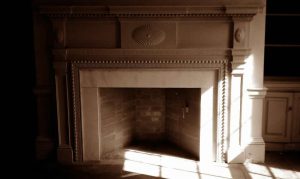
Hopefully the worst of the cold weather is over, but it certainly isn’t getting warm anytime soon. With the cold temperatures, lots of Hampton Road’s families have been using their fireplaces for supplemental heat.
As you likely remember from middle school science class, hot air rises. As air becomes hot, it is absorbing energy in the form of heat. The absorbed energy makes the molecules in air move and expand, decreasing the density of the air. On the other hand, cold air is more dense because the molecules are closer together. Their bonds are absorbing less energy and therefore do not move as much.
If your chimney is masonry (made of brick), and is on the outside of the house, in cold weather the air inside the chimney will be very cold. The cold air wants to come down the chimney, which make starting a fire difficult and can push smoke into your house. Even after outdoor temperatures warm up, this problem can continue.
When starting a fire in cold weather, it can help to (carefully) hold a piece of lit newspaper near the damper to help the cold air start moving up the chimney. Keeping the fire actively flaming also helps, but be careful that it isn’t too large a fire for the fireplace. Using dry, well-seasoned hardwood makes an active fire easier to maintain. As the fire dies out, the cold air will come back down the chimney.
And don’t forget the key rules of fireplace safety: 1) Always use a screen or doors, 2) NEVER leave a fire unattended, and 3) Have a valid fire extinguisher on hand that you know how to use. Stay warm out there!
